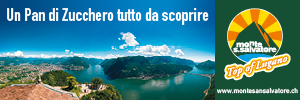Church of Negrentino
Cities & Monuments
The church of Negrentino, originally dedicated to S. Ambrogio Vecchio (today in S. Carlo), is one of the most remarkable ones in Ticino. The blissful location, the Romanesque architecture and rich artistic decorations are what make it so unique. Surrounded by fields at an altitude of 850 meters, isolated and facing a cliff that opens onto a vast panorama, this example of Ticino's Romanesque and Lombard architecture preserves a timeless charm. Visiting Negrentino also offers the occasion for a first introduction to the Blenio Valley, nicknamed the valle del sole (Valley of the Sun).
The visit
The gracious church is accessible on foot in a few minutes from Leontica by crossing a modern gangway installed to ease access to this important monument. The keys to access this place of worship are available at the restaurants in the village of Acquarossa.
The building, built in the 11th century and mentioned for the first time in 1224, is located on the ancient transit route of the Nara Pass which connects two valleys: Blenio and Leventina. The bell tower, detached from the main body of the church, is probably from the following century.
The pictorial decorations cover most of the internal walls and can be attributed to three different eras. The extraordinary fresco located in the counter-facade of the main apses should be original to the church: it represents the Christ in the centre of a game of concentric circles symbolizing the universe that offers him a crown of thorns. Behind him, the tools of the Passion (spear and stick). On either side, the Apostles. Above, a Greek fret interrupted by two lambs and a marine animal. Below, a shoot. A very singular composition that is interpreted as either the Resurrection, the Ascension or the Universal Judgment. The color tones are delicate. The prevailing ones are aqua, okra and brick red. As a whole, it is considered an outstanding fresco with apparent Byzantine influence. The date of work is uncertain (1010-1100) but it is most certainly one of Ticino's most ancient and is often studied by researchers of the great Romanesque paintings of Northern Italy.
The other paintings in the oldest part of the church are works of the Seregnesi, active fresco painters in Ticino and in the Grisons after mid-1400s. Depicted in the main apse are classic themes of medieval churches: Christ in ‘vesica piscis’, the Four Evangelists, the Apostles. In the lower part, curtains conceal the original decoration evoked by the emerging dragon's head. On both sides, Santo Stefano and Santa Caterina. Illustrated below the arch are the King and the Prophets and in the triumphal arch, the Annunciation. Votive paintings decorate the Northern walls including Sant'Ambrogio, a Virgin Mary in a throne, a second Virgin Mary between Saint Anthony the Abbot and San Bernardino and a Crucifixion.
Another prolific workshop worked in Negrentino: around 1510 Antonio da Tradate and his aides frescoed the minor apse and the walls of the second aisle. The main thread of the apse paintings is the Life of the Virgin, developed around the central fresco depicting "Mary's Coronation". In the dividing arches, the "Assumption of the Virgin" assisted by the Apostles and musician angels. Under the arches, Prophets and Saint Anthony the Abbot.
Painted on the counter-facade is a scene of Miracle of Parabiagio: Sant'Ambrogio on a horse appears to the Milanese during the battle (1339) to support them. On the sides are illustrated Saints Gervasio and Protasio, two martyr brothers from the first centuries of Christianity.
On the Southern wall, other votive paintings can be admired.

 Back to the list
Back to the list






